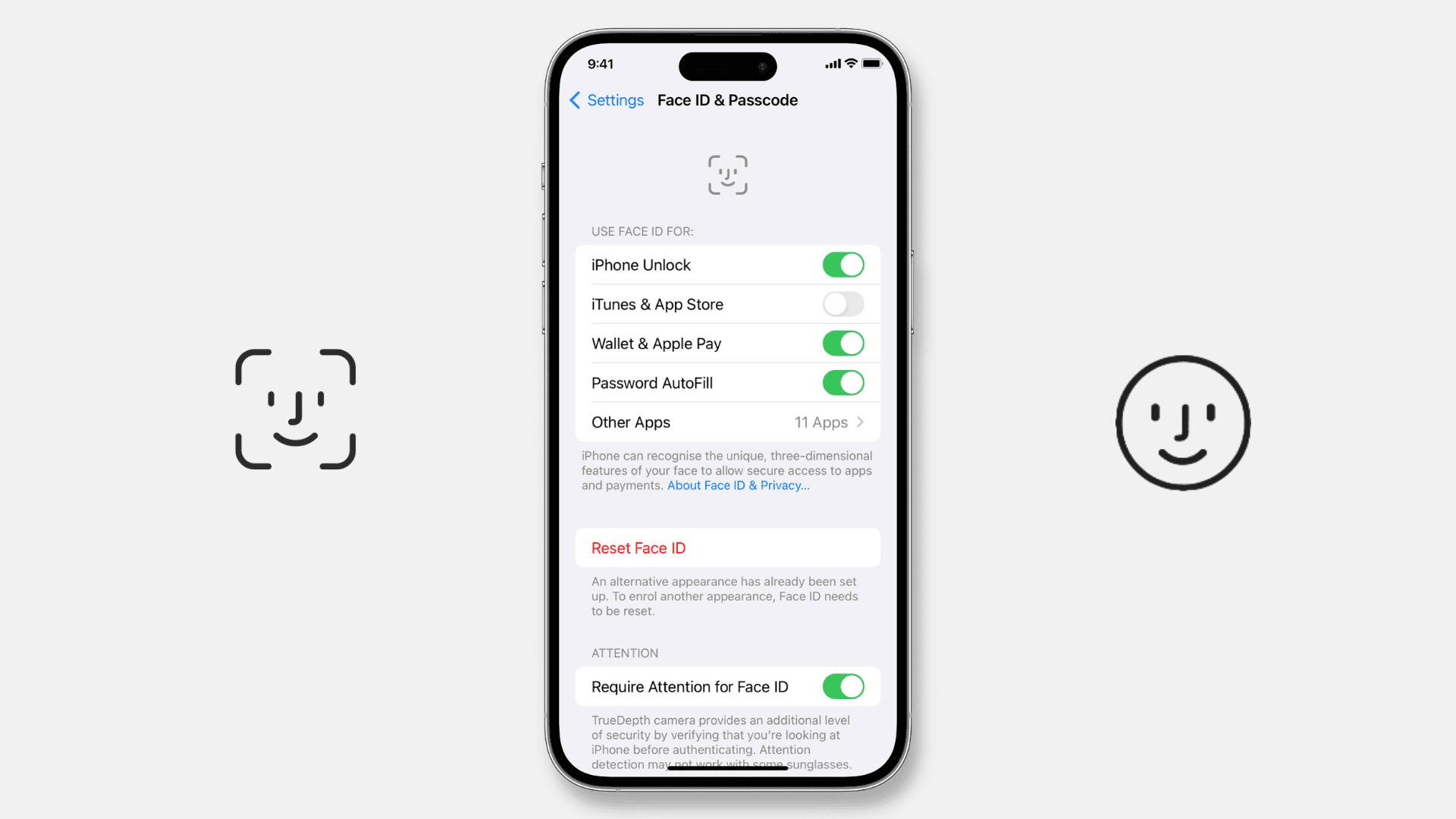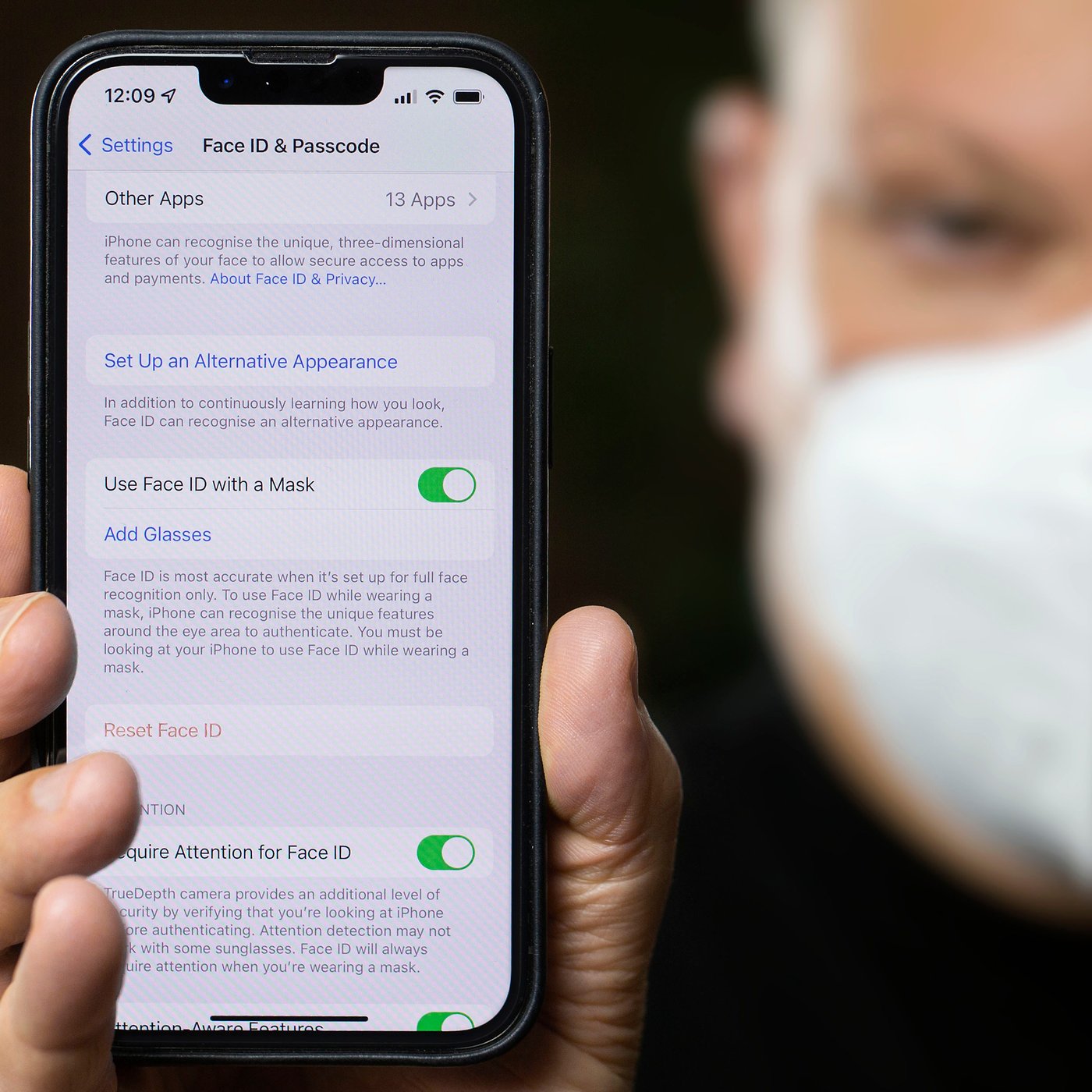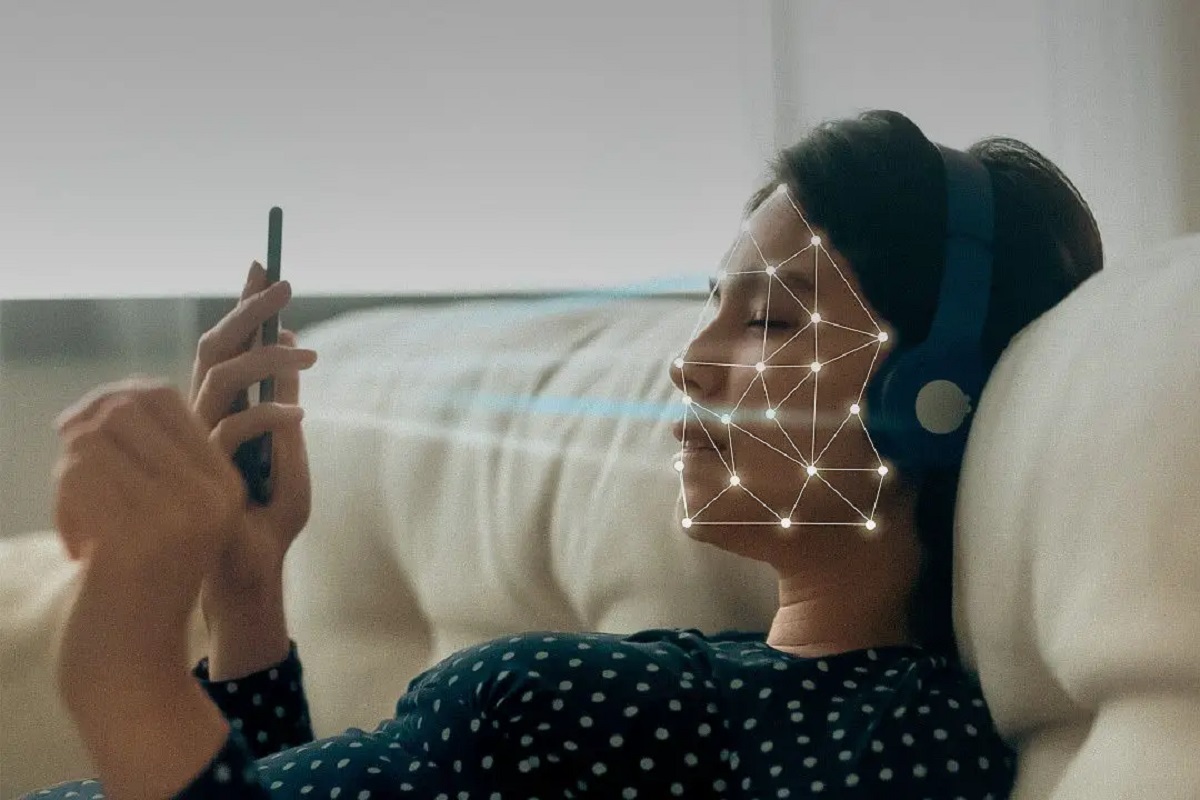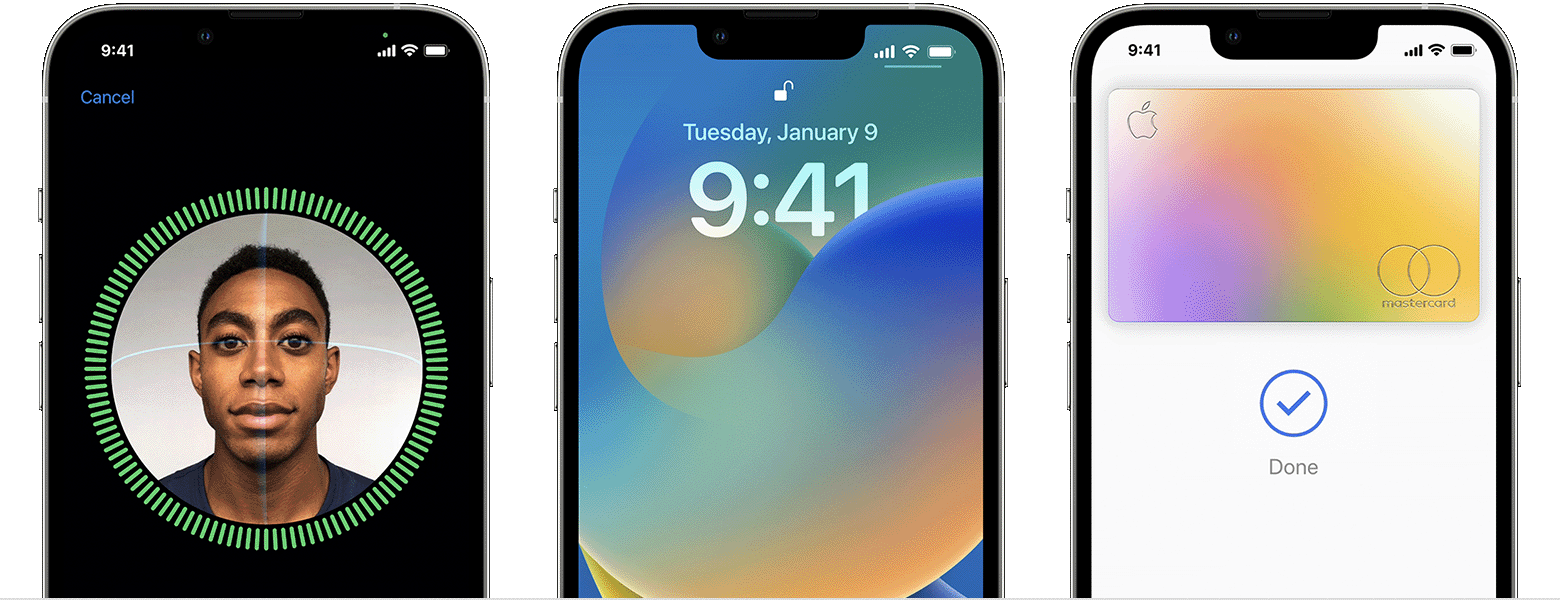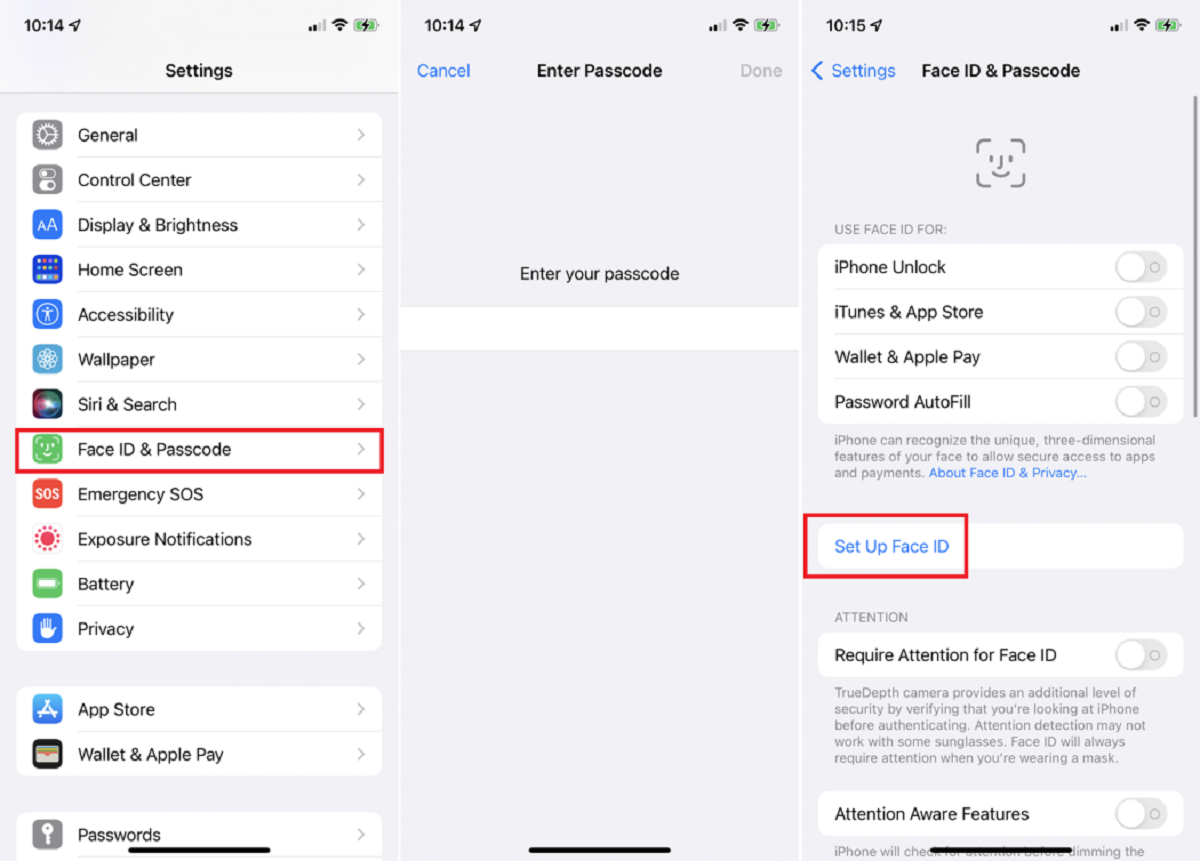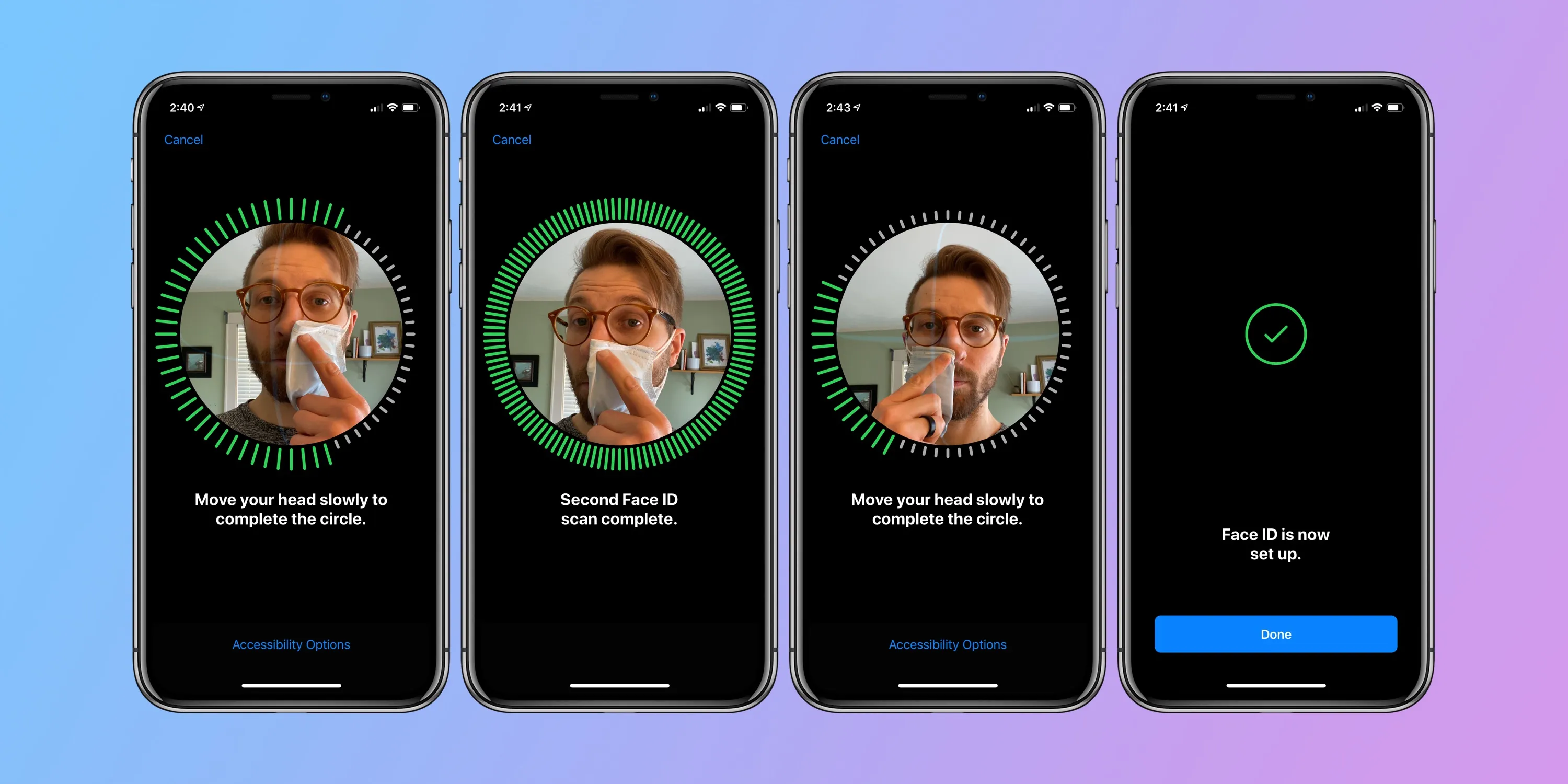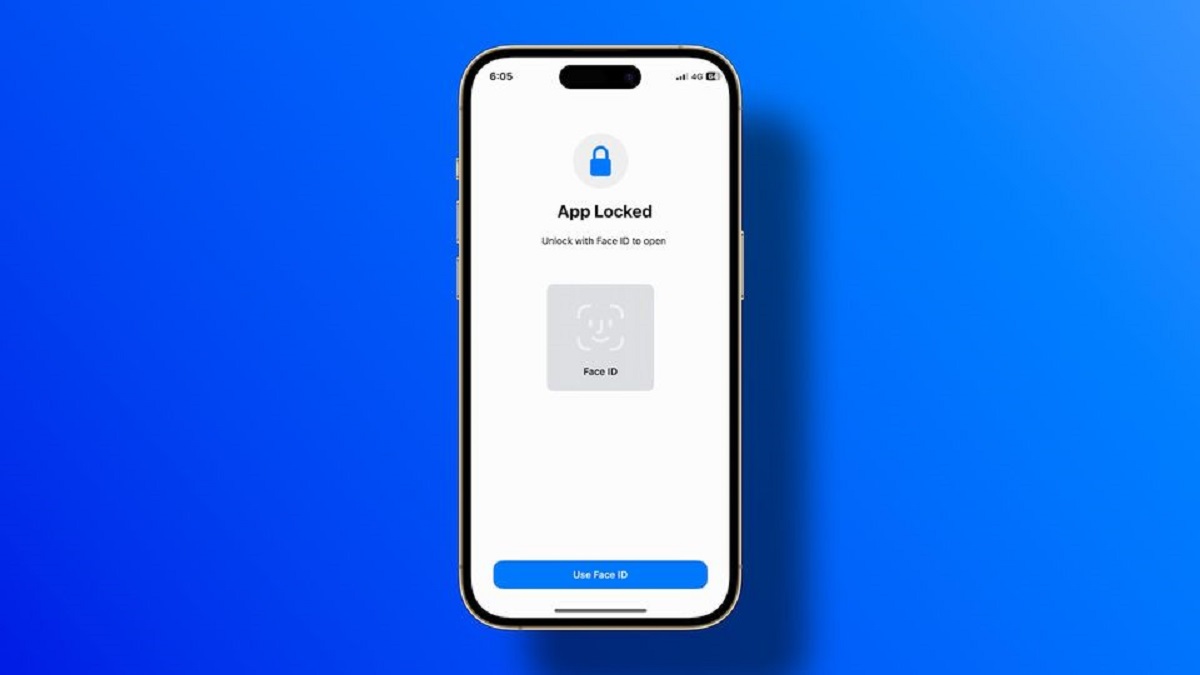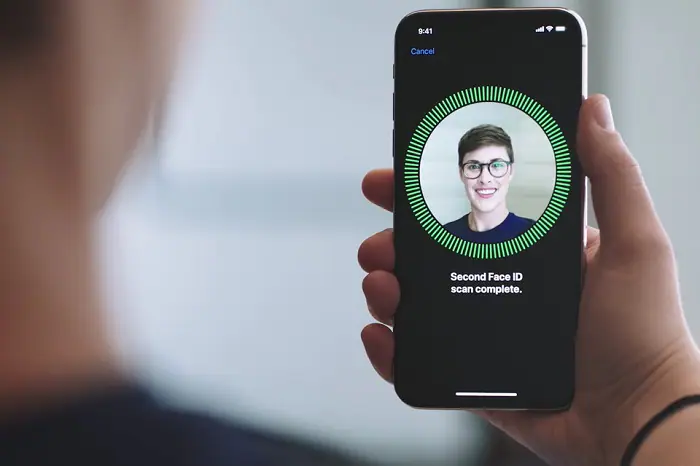Introduction
Face ID is a groundbreaking feature introduced by Apple that allows users to unlock their devices, authorize payments, and access secure applications using facial recognition technology. With just a glance, your iPhone or iPad can accurately identify your face and grant you instant access to your personal information. However, like any technology, Face ID may encounter issues from time to time, leaving users frustrated and searching for solutions.
In this article, we will explore the common causes of Face ID not working and provide troubleshooting steps to help you resolve any issues you may be facing. Whether your Face ID is not recognizing your face, experiencing difficulties in certain lighting conditions, or not functioning after an iOS update, we’ve got you covered. We will also discuss other potential factors, such as dirty cameras or screens, accidental damage, facial changes, and the impact of wearing a face mask on Face ID performance.
By following the troubleshooting steps outlined in this article, you can gain a better understanding of why your Face ID may not be functioning as expected and take the necessary actions to rectify the situation. So, if you’re currently facing any issues with your Face ID, read on to find solutions that will help you regain the convenience and security this feature provides.
Common Causes of Face ID Not Working
Face ID is a reliable and advanced technology, but there are several factors that can contribute to its malfunction. Understanding the common causes of Face ID not working can help you pinpoint the root of the problem and find an appropriate solution:
- Environmental factors: Face ID relies on various environmental conditions, such as lighting and distance, for accurate facial recognition. Poor lighting, extreme angles, or excessive movement can hinder Face ID’s ability to recognize your face.
- Software updates: Sometimes, Face ID issues can be attributed to software updates. A new iOS update may introduce bugs or compatibility issues that affect Face ID’s performance. Ensuring your device is running the latest software version can help resolve these issues.
- Dirty camera or screen: A dirty camera lens or screen can obstruct Face ID’s ability to properly scan your face. Fingerprints, smudges, or debris on the camera lens or screen can interfere with the infrared sensors, causing Face ID failures.
- Accidental damage: Physical damage to the front-facing camera, TrueDepth sensors, or other hardware components can directly impact Face ID’s functionality. If your device has been dropped or subjected to any form of impact, it is possible that Face ID may stop working as a result.
- Facial changes: Our appearances can change over time due to factors like facial hair growth, weight fluctuations, or cosmetic procedures. Such changes may render Face ID less accurate in recognizing your face. Re-enrolling your face in Face ID settings can help recalibrate the feature to your updated appearance.
- Face mask usage: In the wake of the COVID-19 pandemic, the widespread usage of face masks has become the norm. Unfortunately, wearing a face mask can obstruct Face ID’s ability to detect the entirety of your face, resulting in failed recognition attempts.
By identifying the potential causes behind your Face ID issues, you can take the necessary steps to troubleshoot and resolve the problem. In the next section, we will provide troubleshooting steps for each specific Face ID issue, helping you overcome any obstacles and restore the functionality of this essential feature.
Troubleshooting Steps for Face ID Issues
If you’re encountering issues with your Face ID, there are several troubleshooting steps you can take to resolve the problem. Follow these steps sequentially to identify and mitigate the underlying cause:
- Ensure good lighting: Make sure you are in a well-lit environment as low light conditions can hinder Face ID’s accuracy. Avoid direct sunlight or harsh shadows and position yourself in a way that your face is evenly illuminated.
- Remove any obstacles: Ensure that there are no obstructions like scarves, hats, or sunglasses covering your face. Additionally, make sure your device’s front camera and TrueDepth sensors are not obscured by dirt, fingerprints, or screen protectors. Clean them if necessary.
- Re-enroll your face: If you’ve made any significant changes to your appearance such as growing a beard or undergoing facial reconstructive surgery, it’s recommended to remove and re-enroll your face in Face ID settings to update the recognition data.
- Reset Face ID: If none of the above steps work, you can try resetting Face ID entirely by going to Settings > Face ID & Passcode and selecting “Reset Face ID.” Afterward, set up Face ID again and follow the on-screen instructions.
- Update to the latest iOS version: Ensure that your device is running the latest iOS version available. Check for any pending software updates and install them if necessary. New updates often include bug fixes and improvements that may address Face ID issues.
- Disable and re-enable Face ID: Temporarily disabling Face ID and then re-enabling it can sometimes resolve minor software glitches. Go to Settings > Face ID & Passcode, enter your passcode, and toggle off Face ID. Restart your device, then re-enable Face ID using the same steps.
If, after following these troubleshooting steps, your Face ID is still not functioning correctly, it may be a hardware-related issue. In such cases, it is advisable to contact Apple Support or visit an authorized service provider for further assistance with diagnosing and resolving the problem.
Issue 1: Face ID Not Recognizing Your Face
One of the most common issues with Face ID is when it fails to recognize your face, preventing you from unlocking your device or accessing certain features. If you’re experiencing this problem, here are some troubleshooting steps you can take:
- Check for proper positioning: Ensure that your face is properly aligned with the front-facing camera. Position your face within the frame displayed on the screen and ensure that your eyes, nose, and mouth are clearly visible to the TrueDepth sensors.
- Remove any face coverings: If you’re wearing a face mask, Face ID might struggle to recognize your face. Temporarily remove the face mask while using Face ID to see if that resolves the issue.
- Re-enroll your face: Updating your facial recognition data by removing and re-enrolling your face in Face ID settings can help improve its accuracy. Go to Settings > Face ID & Passcode, enter your passcode, and select “Set Up Face ID” to start the re-enrollment process.
- Reset Face ID: If the problem persists, you can try resetting Face ID entirely. Go to Settings > Face ID & Passcode, enter your passcode, and select “Reset Face ID.” Follow the instructions to set up Face ID again from scratch.
- Ensure good lighting conditions: Face ID relies on adequate lighting for accurate facial recognition. Make sure you are in a well-lit environment with balanced lighting, avoiding extreme bright or dark conditions.
By following these troubleshooting steps, you can increase the chances of Face ID recognizing your face successfully. However, if the issue continues to persist, it is advisable to contact Apple Support for further assistance or visit an authorized service provider to evaluate and repair any potential hardware-related problems.
Issue 2: Face ID Not Working in Certain Lighting Conditions
Another common issue with Face ID is when it struggles to function properly in certain lighting conditions. If you’re facing this problem, here are some troubleshooting steps to consider:
- Adjust your environment: Ensure that you’re in a well-lit environment with balanced lighting. Avoid areas with extreme brightness or darkness, as this can affect Face ID’s ability to accurately recognize your face. Move to a different location, if possible, to see if the lighting conditions have an impact.
- Check for obstructions: Ensure that there are no physical obstructions, such as your hand or other objects, casting shadows on your face. Shadows can interfere with the TrueDepth sensors’ ability to accurately capture facial data.
- Try different angles: Experiment with different angles while positioning your face in front of the camera. Tilt your head slightly or adjust the angle of your device to find a position where Face ID performs more efficiently.
- Re-enroll your face: Updating your facial recognition data by removing and re-enrolling your face in Face ID settings can help improve its performance in challenging lighting conditions. Go to Settings > Face ID & Passcode, enter your passcode, and select “Set Up Face ID” to re-enroll your face.
- Adjust True Tone display: If you have True Tone enabled on your device, consider disabling it temporarily. True Tone adjusts the display’s color temperature based on ambient lighting conditions, which might affect Face ID’s performance under certain lighting scenarios.
Employing these troubleshooting steps can often improve Face ID’s functionality in challenging lighting conditions. However, if the issue persists, it is recommended to contact Apple Support or visit an authorized service provider for further assistance and evaluation of any potential hardware-related issues.
Issue 3: Face ID Not Working After iOS Update
After updating your iOS, you may encounter issues with Face ID not working as expected. This can be a frustrating experience, but there are several troubleshooting steps you can take to resolve the issue:
- Restart your device: Sometimes, a simple device restart can resolve software conflicts and glitches introduced after an iOS update. Press and hold the power button (or side button) and either volume button until the slider appears. Slide it to power off, then turn your device on again.
- Update your apps: Developers often release app updates to ensure compatibility with the latest iOS version. Check the App Store for any available updates and install them. Outdated apps may not work correctly with Face ID after an iOS update.
- Reset Face ID: If the issue persists, try resetting Face ID. Go to Settings > Face ID & Passcode, enter your passcode, and select “Reset Face ID.” Follow the instructions to set up Face ID again from scratch.
- Reset all settings: Resetting all settings can help resolve any underlying software conflicts. However, note that this will remove your personalized settings, so you’ll need to reconfigure them afterward. Go to Settings > General > Reset > Reset All Settings.
- Perform a factory reset: If all else fails, you can try performing a factory reset on your device. Make sure to back up your data beforehand as this process will erase all content and settings. Go to Settings > General > Reset > Erase All Content and Settings.
If you’re still experiencing issues with Face ID after attempting these troubleshooting steps, it is advisable to contact Apple Support or visit an authorized service provider for further assistance. They can provide guidance and additional solutions to resolve any potential software-related problems introduced by the iOS update.
Issue 4: Face ID Not Working Due to Dirty Camera or Screen
If your Face ID is not working, one possible cause could be a dirty camera lens or screen. Fingerprints, smudges, or debris on the camera or screen surface can interfere with Face ID’s ability to accurately scan your face. Here are some troubleshooting steps to address this issue:
- Clean the camera lens: Gently wipe the front-facing camera lens with a soft, lint-free cloth. Ensure that the cloth is clean and free of any particles that can scratch the lens further. Avoid using harsh chemicals or abrasive materials that can damage the lens.
- Clean the screen: Use a microfiber cloth to clean the screen of your device. Start by wiping away any visible smudges or fingerprints. Then, gently wipe the screen in a circular motion to remove any remaining dirt or debris. Make sure to turn off your device before cleaning the screen.
- Remove the screen protector: If you’re using a screen protector, it’s possible that it may interfere with Face ID’s functionality. Remove the screen protector and clean both the screen and the protector thoroughly before reapplying it or considering an alternative type of protector.
- Check for residue on the camera or screen: Inspect the camera lens and screen closely for any residue or sticky substances. If you notice any, use a small amount of water or screen cleaning solution specifically designed for electronic devices to clean the affected areas. Be sure to follow the manufacturer’s instructions when using cleaning solutions.
- Test Face ID after cleaning: Once you have cleaned the camera lens and screen, test Face ID again to see if the issue persists. Make sure that your face is well-positioned in front of the camera and that there are no obstructions.
If the issue with Face ID not working due to a dirty camera or screen continues after cleaning, it may be necessary to seek further assistance. Contact Apple Support or visit an authorized service provider for professional evaluation and potential hardware cleaning or replacement, if required.
Issue 5: Face ID Not Working After Accidental Damage
If you’ve accidentally damaged your device, it can impact the functionality of Face ID. Physical damage to the front-facing camera, TrueDepth sensors, or other hardware components can interfere with Face ID’s operation. Here are some troubleshooting steps to consider in such cases:
- Inspect for visible damage: Carefully examine your device for any signs of physical damage, such as cracks, dents, or scratches. If you notice any damage to the front-facing camera or TrueDepth sensors, it’s likely that Face ID won’t function properly.
- Contact Apple Support: If you suspect that accidental damage is causing Face ID issues, it’s best to contact Apple Support or visit an authorized service provider. They can assess the extent of the damage and suggest appropriate solutions, such as repairing or replacing the affected components.
- Consider device repair: Depending on the severity of the accidental damage, it may be necessary to have your device repaired. Apple offers official repair services, and authorized service providers can often provide reliable repairs using genuine parts.
- Restore from backup: Before seeking repairs, it’s essential to back up your device to ensure you don’t lose any important data. You can then restore your device after it has been repaired, minimizing any inconvenience caused.
Accidental damage can significantly impact the performance of Face ID, and attempting to fix the issue on your own might worsen the situation. It’s advisable to seek professional assistance to ensure proper diagnosis and resolution of any hardware-related problems caused by accidental damage.
Issue 6: Face ID Not Working Due to Facial Changes
If you’ve experienced changes in your facial appearance, such as growing a beard, gaining or losing weight, or undergoing cosmetic procedures, it can affect the accuracy of Face ID. Face ID relies on the initial data it captures during setup, and significant facial changes may result in Face ID not working as expected. Here are some troubleshooting steps to consider:
- Re-enroll your face: Removing and re-enrolling your face in Face ID settings can help recalibrate the feature to your updated appearance. Go to Settings > Face ID & Passcode, enter your passcode, and choose “Set Up Face ID” to start the re-enrollment process.
- Ensure good lighting conditions: Proper lighting is crucial for accurate facial recognition. Make sure you are in a well-lit environment with balanced lighting, as it can aid Face ID in capturing the details of your face more effectively.
- Experiment with angles: Try positioning your face at different angles to see if Face ID can better recognize your facial features. Tilting your head slightly or adjusting the angle of your device might help improve Face ID’s accuracy.
- Consider disabling attention-aware features: Face ID has attention-aware features that require eye contact for certain actions like unlocking your device. Disabling these features in Settings > Face ID & Passcode can sometimes enhance Face ID’s functionality.
- Practice patience: It may take some time for Face ID to adapt to your changing appearance. Continue to use Face ID in different lighting conditions and angles, as the system can improve its recognition accuracy over time.
By following these troubleshooting steps, you can increase the chances of Face ID working correctly, even with significant facial changes. However, if the issue persists, it may be necessary to seek further assistance from Apple Support or visit an authorized service provider for additional guidance and evaluation of any potential hardware-related concerns.
Issue 7: Face ID Not Working Due to Face Mask
With the widespread usage of face masks in response to the COVID-19 pandemic, an issue that many users are facing is Face ID not working while wearing a mask. The face mask can obstruct Face ID’s ability to detect the entirety of your face, resulting in failed recognition attempts. Here are some troubleshooting steps to address this issue:
- Use passcode instead: When wearing a face mask, opt to use your device’s passcode instead of relying on Face ID for authentication. Simply swipe up or press the side button to access the passcode entry screen.
- Add an alternate appearance: Face ID allows you to add an alternate appearance, which can be helpful when wearing a mask. Go to Settings > Face ID & Passcode, enter your passcode, and choose “Set Up an Alternate Appearance.” This will allow Face ID to recognize you with the mask on.
- Consider using a passcode temporarily: If you don’t want to add an alternate appearance, you can temporarily disable Face ID by going to Settings > Face ID & Passcode, enter your passcode, and toggle off Face ID. This will allow you to rely solely on the passcode for device authentication.
- Keep your face mask below your chin: Adjust your face mask to ensure it is positioned securely below your chin. This can help minimize the interference with the TrueDepth sensors of Face ID.
- Remove your face mask briefly: If it’s safe to do so, you can briefly remove your face mask when authenticating with Face ID. Quickly pull your mask down, allow Face ID to recognize your face, and then put the mask back on.
While these troubleshooting steps can help you overcome the issue of Face ID not working due to a face mask, it’s important to remember that wearing a face mask is crucial for your safety and the safety of others. Consider using your device’s passcode or an alternate appearance to facilitate easy access while maintaining proper mask usage protocols.
Conclusion
Face ID is a remarkable feature that offers convenience and security by utilizing facial recognition technology. However, it is not immune to encountering issues. In this article, we have explored the common causes of Face ID not working and provided troubleshooting steps for each scenario.
We discussed various factors that can affect the performance of Face ID, such as environmental conditions, software updates, dirty camera or screen, accidental damage, facial changes, and face mask usage. For each issue, we outlined specific troubleshooting steps to help you overcome the problem.
Remember to ensure good lighting conditions, keep your camera and screen clean, consider re-enrolling your face or resetting Face ID if needed, and stay up to date with software updates. In some cases, you may need to seek professional assistance from Apple Support or authorized service providers for hardware-related issues.
It’s important to remain patient and persistent when troubleshooting Face ID issues. Sometimes, it may take a combination of different steps and adjustments to fully restore the functionality of Face ID.
Face ID continues to evolve and improve with each software update, offering enhanced accuracy and performance. But even with advancements, it’s essential to acknowledge that no technology is flawless, and occasionally issues may arise.
By following the troubleshooting steps outlined in this article, you can increase the chances of resolving any Face ID issues you may encounter. Ultimately, with a little perseverance and the right guidance, you can once again enjoy the seamless and secure experience that Face ID provides.







